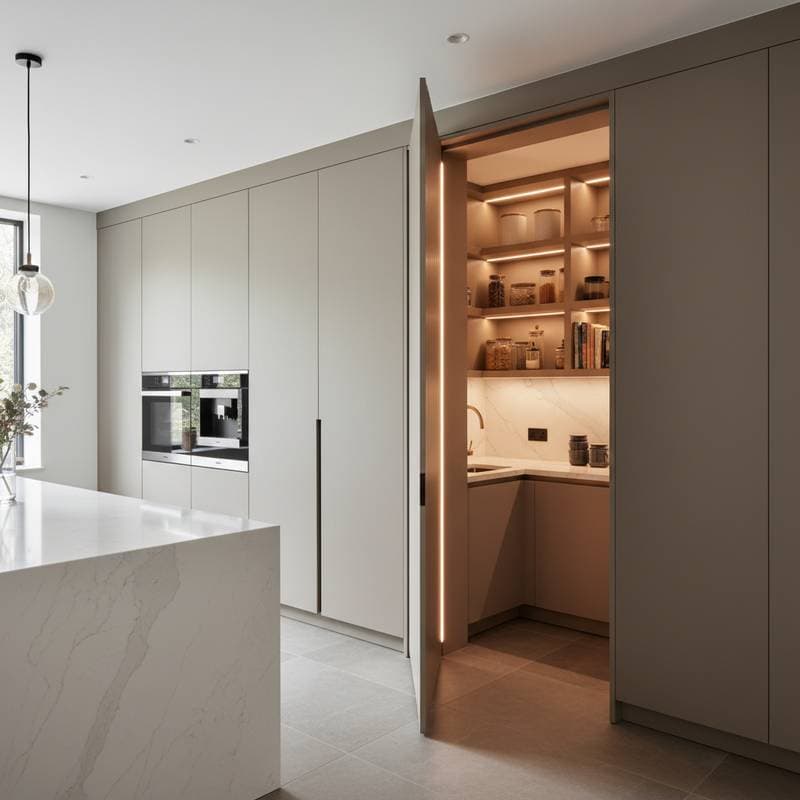The Appeal of Wet Rooms: A 15% Boost to Home Value in 2025
Installing a wet room elevates home value by approximately 15 percent. This transformation converts a standard bathroom into a streamlined, barrier-free environment suited to contemporary lifestyles. The design integrates the entire space as a shower area, eliminating thresholds, enclosures, and complicating elements while facilitating straightforward maintenance.
For those seeking a luxurious yet practical bathroom renovation, a wet room provides an ideal solution. The following sections outline planning procedures, expense considerations, duration estimates, and scenarios requiring professional involvement.
Step-by-Step Guide to Wet Room Installation
1. Design the Layout
Select a suitable corner or wall for the showerhead placement. Position the toilet and vanity away from primary water spray areas whenever feasible. Verify that existing floor joists support additional waterproofing materials to prevent structural issues.
2. Apply Waterproofing Measures
Incorporate a specialized membrane system beneath the flooring and extending up the walls. Secure all seams with appropriate sealants. This phase demands precision, as undetected water intrusion can rapidly compromise subfloor integrity and adjacent structures.
3. Integrate Drainage and Slope
Opt for a linear drain along the wall or a central point drain for optimal performance. Establish a subtle incline of one-quarter inch per linear foot to direct water toward the drain efficiently. Proper sloping ensures complete drainage without visible puddling.
4. Finish with Tiles or Panels
Select slip-resistant tiles or panels certified for wet environments. Apply epoxy-based grout to resist mold growth. Larger format tiles reduce the number of joints, minimizing potential leak points and simplifying upkeep.
5. Mount Fixtures
Choose wall-mounted faucets and suspended vanities to maintain a minimalist appearance. Incorporate glass partitions selectively to manage water dispersion in larger spaces.
6. Conduct Thorough Testing
Operate the shower system for an extended period to identify any leaks. Allow surfaces to dry completely, then reapply sealants to edges and install final accessories such as shelving or lighting.
Project Timeline
A comprehensive wet room renovation typically spans one to two weeks.
- On-site labor phases: Five to seven days encompassing demolition, waterproofing application, tiling, and fixture assembly.
- Curing periods: Two to four days for membranes and grout to fully set.
Accelerating the waterproofing process invites expensive repairs. Permit sufficient time for each layer to cure, guaranteeing enduring water resistance.
Essential Tools and Materials
Prepare the following items to streamline the project:
- Waterproof membrane or tanking system
- Trowel and roller applicators for membrane
- Tile cutter and spirit level
- Drain assembly (linear or central configuration)
- Slip-resistant tiles or moisture-proof wall panels
- Epoxy grout and flexible sealant
- Silicone caulk and perimeter edging
- Damp-rated exhaust fan
Assemble all equipment in advance. Construction progresses rapidly following the initiation of waterproofing.
Considerations for Regional and Climate Variations
In areas with high humidity or proximity to coastlines, select corrosion-resistant fixtures and quick-drying grout formulations. Arid regions benefit from enhanced ventilation to dissipate steam effectively. Properties in cooler climates often incorporate electric underfloor heating to maintain tile warmth and accelerate evaporation.
Structures with wooden subfloors in older buildings require backer board installation and joist reinforcement prior to waterproofing. Consult local building regulations regarding slope specifications and drainage standards. Certain municipalities mandate flood simulation tests before applying final finishes.
Factors Driving Wet Room Value Appreciation
Prospective buyers prioritize bathrooms that demand minimal upkeep and embody modern functionality. Wet rooms create an illusion of expansiveness, even within compact layouts. Their level-entry design also accommodates universal accessibility, appealing to diverse demographics including those planning to age in place.
Market analyses indicate that refreshed bathrooms consistently rank among the premier value-adding renovations. A meticulously constructed wet room, featuring premium materials and optimized plumbing, can enhance appraised value by around 15 percent. This uplift stems from improved aesthetics, durability, and alignment with current buyer preferences for wellness-oriented spaces.
Pitfalls to Sidestep in Wet Room Projects
-
Neglecting Expert Waterproofing. Sub-tile moisture can erode structural elements like beams and adjacent walls. Perform rigorous testing prior to covering surfaces.
-
Selecting Inappropriate Flooring. Prioritize tiles with designated wet-area ratings. Textured or matte surfaces provide superior traction compared to polished alternatives.
-
Inaccurate Slope Implementation. Accumulated water adjacent to walls necessitates disassembly and correction. Maintain vigilance with leveling tools during setup.
-
Overlooking Air Circulation. Inadequate exhaust systems foster mold development despite robust waterproofing. Install fans capable of handling high moisture loads.
-
Excessive Ornamentation. Simplicity enhances usability. Neutral tones and unobstructed lines amplify perceived room size.
Expert Recommendations for Optimal Results
- Pair ceiling-mounted and handheld showerheads to accommodate varied preferences.
- Integrate built-in niches for storage, preserving floor space.
- Install radiant floor heating to enhance user comfort and expedite drying.
- Specify lighting fixtures engineered for humid conditions.
- Verify drain efficacy using colored dye prior to permanent enclosures.
A successful wet room operates seamlessly and promotes tranquility. Accurate gradients and robust seals eliminate ongoing drainage concerns.
Frequently Asked Questions
What is the typical home value increase from a wet room? Estimates range from 10 to 15 percent, influenced by material quality and local market dynamics.
Is every bathroom suitable for wet room conversion? Most configurations qualify, provided floors receive structural reinforcement and comprehensive waterproofing to withstand constant exposure.
Are specialized drains required for wet rooms? Affirmative. Linear or central drains equipped with built-in traps facilitate uninterrupted water evacuation.
Does water dispersal pose issues in wet rooms? Effective sloping combined with optional transparent barriers confines most spray effectively.
Execute Your Wet Room Transformation
Wet rooms transcend fleeting styles; they represent strategic enhancements that amplify daily comfort and financial returns. Approach the project methodically, prioritize waterproof integrity, and adapt selections to environmental conditions for a resilient, value-enhancing addition.










